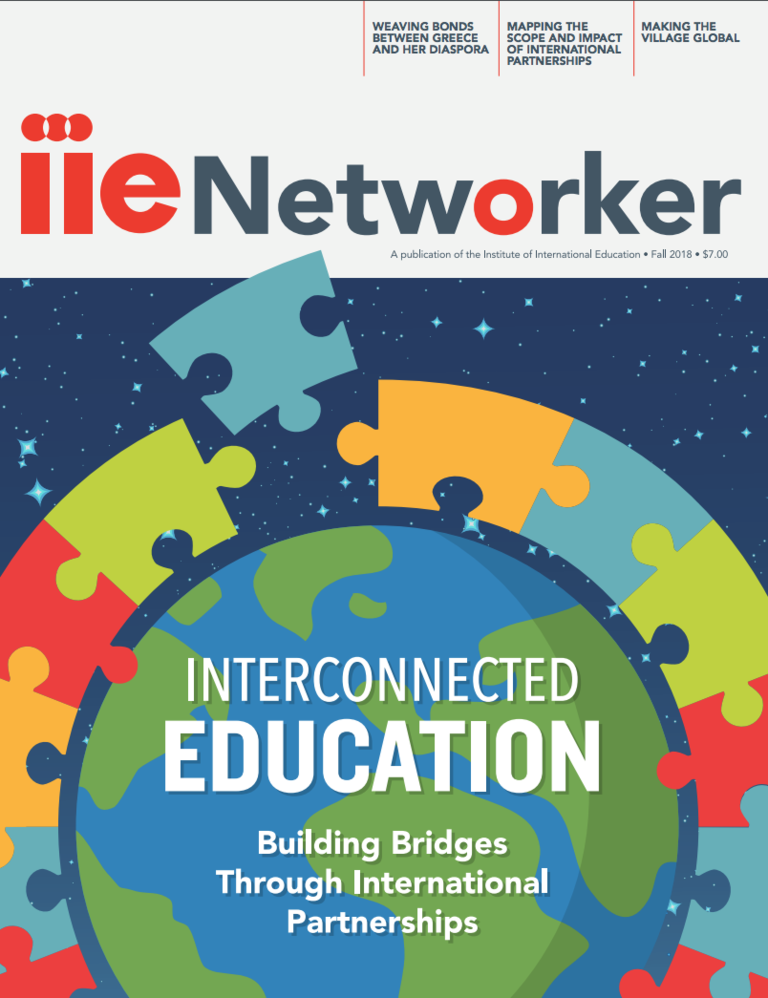
By Downing A. Thomas, associate provost and dean of International Programs, University of Iowa, Institute of International Education Networker
In an era where data is king and budgets are tight, International Programs Associate Provost Downing A. Thomas, in a recent article for IIENetworker, shows how the University of Iowa is using data to better inform strategic decisions and measure international impact as it relates to furthering specific institutional goals.

This article originally appeared in the Fall 2018 issue of the IIENetworker
Today, international partnerships are not just icing on the cake; they help drive the core missions of our colleges and universities. Partnerships allow us to advance the missions of our institutions by taking advantage of targeted student recruitment, expanding study abroad and exchange options, and supporting faculty research and creative work. While the value of international partnerships seems clear, understanding their scope and measuring their impact can be more challenging. As competition for scarce resources increases, partnerships are a creative way to leverage resources abroad that may not be available on your campus. These resources can take many forms, from new geographical locations for student mobility, to connections to business and industry, to fieldwork sites and research data that are not available at home.
At the University of Iowa (UI), we have developed a dashboard solution that allows us to view progress in areas of internationalization that connect with university priorities. The dashboards, currently in their infancy (version 1.0), draw on authoritative data sources to focus on the success of our international students, assess progress on study abroad goals, and examine the scope and impact of international research and creative work. It is in this latter area that the dashboard product allows us to share data on partnerships and linkages with university leadership, even drilling down to the collegiate and departmental levels to facilitate discussions with deans and department heads. The dashboard provides an opportunity to visualize, understand, and analyze data on our international partnership activities, complementing the anecdotes and stories we already have.
Creation and Discovery: The Dashboard
We have drawn data from multiple sources: university human resources, faculty curricula vitae, our travel registry, and a third-party resource called InCites. While there are other products that may offer access to similar data, InCites is one to which UI faculty and staff have access through an institutional subscription. We have restricted the scope of the dashboard to tenured and tenure-stream faculty only. While other categories of faculty are also engaged in research and creative work, it is only the tenure-stream faculty that are evaluated on their productivity in these areas. Graphs show demographic background for faculty (numbers of international faculty, and faculty with degrees awarded and work experience outside the United States), activities abroad (travel, exhibits and performances, and conference presentations and invitations), and data on formal linkages. Drilling down in each of these graphs, it is possible to view more information, such as a rank ordered list of regions and countries and the colleges and departments that are involved.
The InCites graph tracks scholarship undertaken and published by UI faculty in collaboration with colleagues abroad. Diving deeper into InCites, which pulls from Web of Science, it is possible to view co-authored publications between UI faculty and researchers at individual institutions abroad, and to look at the relative intensity of collaboration between the UI and a given country, compared with other countries. While InCites is focused on co-authorship—a common practice in STEM fields and the health sciences—data drawn from our travel registry and from curricula vitae also include faculty in the humanities, social sciences, and the arts, whose published or exhibited works are less likely to involve collaborations that are formally attributed.
Data as a Platform for Campuswide Discussion and Action
How might the dashboard be used to analyze our international partnerships? Although we are just beginning to explore possibilities, we will certainly use the dashboards to track progress toward specific metrics in our strategic plan, such as the percentage and number of UI undergraduates studying abroad. Looking across multiple data points, we may also explore gaps that emerge. For example, one of our colleges has no formal agreements with institutions outside the United States, yet, faculty in this college have considerable educational or work experience abroad. Are there missed opportunities for partnership development in this college?
Our dashboard has only just been completed and the data on which it draws are not perfect. The information on travel, exhibits, and presentations is dependent on faculty members recording this information. Researchers may also have publications under several different names, or similar names may require disambiguation using ORCID ID so that InCites becomes more accurate. We plan to use this data selectively in campus communications and press releases to incentivize faculty members more fully to report their international activities so that their work is counted and recognized. Despite these caveats, we have taken a first step toward a data-informed understanding of the nature and impact of our international partnerships, and other activities that drive internationalization on our campus.